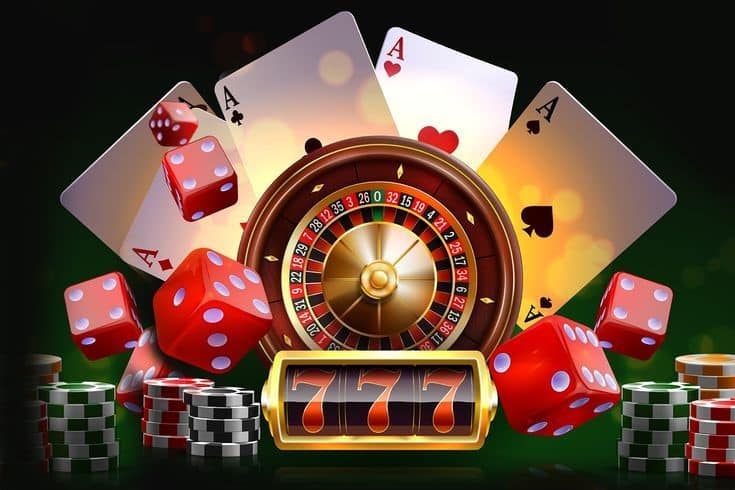Casino experiences have long captivated human interest, drawing players into a world filled with fortune, strategy, and the allure of thrill. Each game is carefully crafted not just for fun, but also to inspire specific emotional responses that keep players engaged and interested. Understanding the drives behind these designs reveals much about how behavioral psychology plays a crucial role in the gaming experience.
From the bright lights and lively sounds to the intricate layering of rules and payoffs, casino games are designed to create an atmosphere of thrill and expectation. Game designers leverage behavioral strategies to influence participant behavior, whether through the use of winning opportunities, near-miss scenarios, or community engagement. By examining these elements, we can better appreciate how casino games fulfill not just a need for entertainment, but more profound psychological needs for excitement and uncertainty.
Understanding Player Actions
Casino games are crafted with a thorough comprehension of gamer psychology, which is crucial for attracting and holding players. The rush of the game, coupled with the anticipation of winning, establishes a formidable attraction. Game designers make use of elements like sonic elements, dynamic graphics, and engaging gameplay to seize attention and evoke emotional responses. These sensory effects enhance the immersive experience, making players feel more involved in the game.
Another important aspect of player behavior is the concept of risk and reward. Casino games often balance high-stakes situations with the potential for substantial rewards, which can lead to the phenomenon known as near-miss effect. When players come close to winning, the brain produces dopamine, strengthening their behavior and motivating them to continue playing in quest of that fleeting win. This cycle of wish and disappointment plays a critical role in how games are constructed and advertised.
Lastly, social factors also play a critical role in player behavior at casinos. Many games are designed to be played in teams or alongside other players, nurturing a sense of community and collective experience. The interaction inherent in games like baccarat enhances enjoyment and can culminate in longer play sessions. Designers capitalize on this by creating environments that invite players to stay, connect, and come back, making the overall casino experience more attractive.
The Role of Imagery and Sound
Imagery and audio play a significant role in improving the gambler’s experience within casino games. Designers utilize vibrant colors, striking graphics, and engaging animations to attract players’ attention and hold their interest. The use of themes, such as adventure or opulence, helps create an immersive atmosphere that transports players into a different world. By appealing to the senses, these elements contribute to a heightened emotional response, encouraging players to interact more deeply with the games.
Sound design is just as important in reinforcing the experience of gambling games. The mix of background music, sound effects for successful combinations, and ambient noises creates an auditory landscape that keeps players fascinated. https://f168.law/ Sounds associated with victories, such as ringing bells or celebratory music, evoke feelings of thrill and satisfaction, encouraging players to continue playing. These audio cues are strategically placed to enhance the thrill of the game and create a more engaging experience.
Moreover, the synchronization of visuals and audio is crucial for supporting the game’s overall concept and mood. Each element should align harmoniously to create a unified experience that pulls players in. The effective use of this synergy not only enhances user enjoyment but also boosts the chances of repeat play, as players become more invested in the captivating world that the gambling games offer. This thoughtful integration of visuals and sound ultimately enhances player involvement and loyalty.
Reward Systems and Participation

The development of gambling experiences heavily relies on incentive systems to keep participants involved and returning for more. These structures are based in behavioral principles that take advantage of human behavior and motivation. Players are often driven by the thrill of success, which is supported by instant feedback through the game structure’s design. This prompt satisfaction not only enhances the overall experience but also cultivates a feeling of success, encouraging players to keep participating in hopes of bigger gains.
Casinos adopt various incentive systems, such as large payouts, extra rewards, and increased rewards, to engage participants. These features create a level of thrill that maintains interest. Additionally, the randomness of outcomes plays a significant role in keeping attention. The intermittent reinforcement schedule, where successes are random but happen often enough, maintains players on edge and motivated to keep playing. This cycle of hope and anticipation is foundational to the effectiveness of gambling experiences.
Moreover, social elements, such as tournaments and collaborative options, enhance the engagement factor by tapping into the desire to compete of players. The communal aspect of gaming with fellow participants can intensify the thrill of winning and create a community atmosphere within the casino. By combining these social dynamics with efficient incentive structures, gambling experiences not only provide entertainment but also nurture a stronger connection among players, solidifying their commitment to the overall experience.